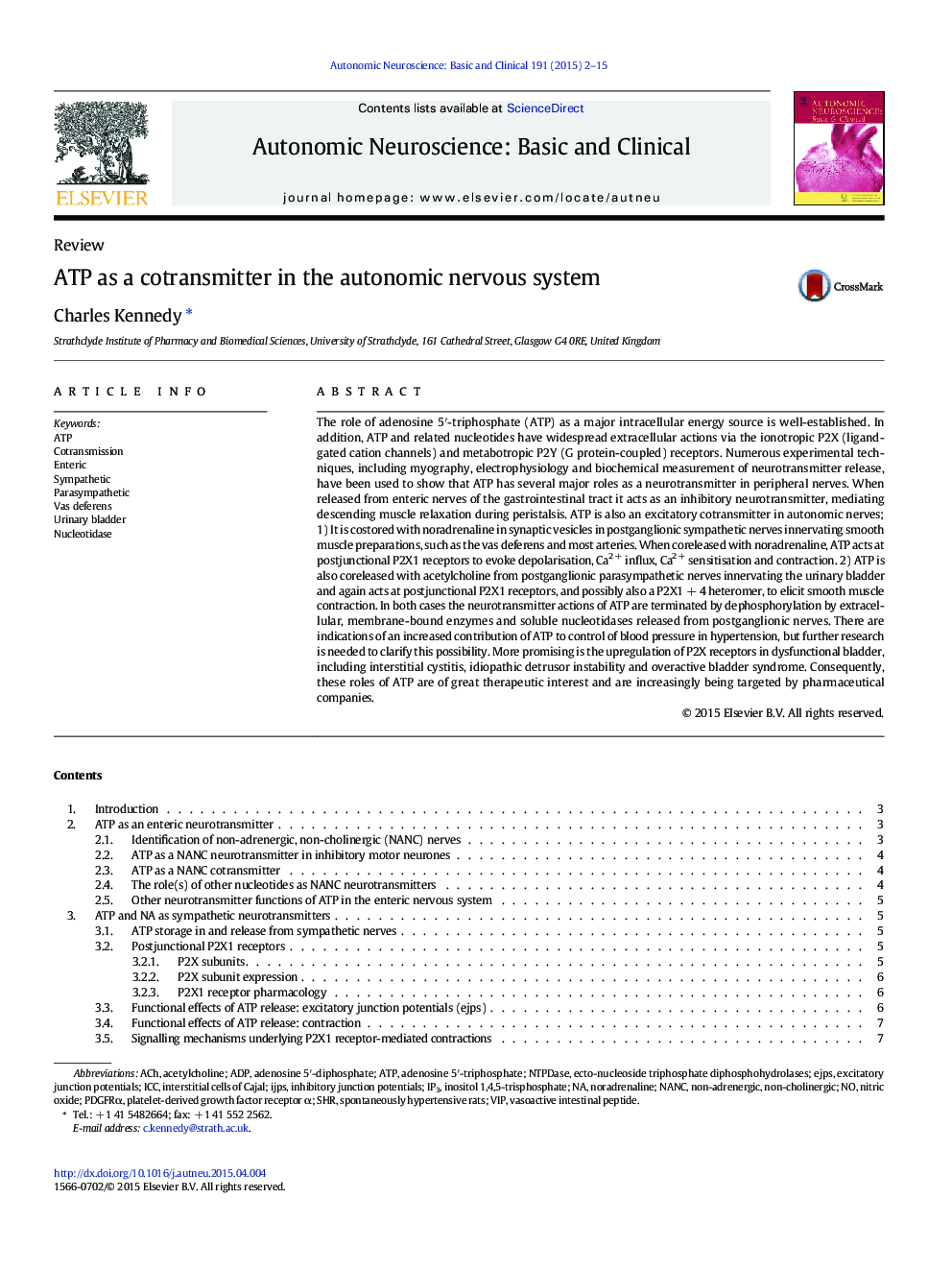| کد مقاله | کد نشریه | سال انتشار | مقاله انگلیسی | نسخه تمام متن |
|---|---|---|---|---|
| 3034581 | 1579524 | 2015 | 14 صفحه PDF | دانلود رایگان |

• ATP is released as an inhibitory neurotransmitter from gastrointestinal enteric nerves and as an excitatory cotransmitter from sympathetic and parasympathetic nerves.
• Its main sites of action are postjunctional P2Y1 receptors in the gut and postjunctional P2X1 receptors in other smooth muscle tissues.
• ATP may also act at P2X1+4 heteromers in urinary bladder to elicit contraction.
• ATP evokes Ca2 + release, K+ efflux, hyperpolarisation and relaxation in the gut, whereas in other smooth muscle tissues it elicits depolarisation, Ca2 + influx, Ca2 + sensitisation and contraction.
• ATP's actions are ended by ecto- nucleotidases and coreleased soluble nucleotidases.
The role of adenosine 5′-triphosphate (ATP) as a major intracellular energy source is well-established. In addition, ATP and related nucleotides have widespread extracellular actions via the ionotropic P2X (ligand-gated cation channels) and metabotropic P2Y (G protein-coupled) receptors. Numerous experimental techniques, including myography, electrophysiology and biochemical measurement of neurotransmitter release, have been used to show that ATP has several major roles as a neurotransmitter in peripheral nerves. When released from enteric nerves of the gastrointestinal tract it acts as an inhibitory neurotransmitter, mediating descending muscle relaxation during peristalsis. ATP is also an excitatory cotransmitter in autonomic nerves; 1) It is costored with noradrenaline in synaptic vesicles in postganglionic sympathetic nerves innervating smooth muscle preparations, such as the vas deferens and most arteries. When coreleased with noradrenaline, ATP acts at postjunctional P2X1 receptors to evoke depolarisation, Ca2 + influx, Ca2 + sensitisation and contraction. 2) ATP is also coreleased with acetylcholine from postganglionic parasympathetic nerves innervating the urinary bladder and again acts at postjunctional P2X1 receptors, and possibly also a P2X1 + 4 heteromer, to elicit smooth muscle contraction. In both cases the neurotransmitter actions of ATP are terminated by dephosphorylation by extracellular, membrane-bound enzymes and soluble nucleotidases released from postganglionic nerves. There are indications of an increased contribution of ATP to control of blood pressure in hypertension, but further research is needed to clarify this possibility. More promising is the upregulation of P2X receptors in dysfunctional bladder, including interstitial cystitis, idiopathic detrusor instability and overactive bladder syndrome. Consequently, these roles of ATP are of great therapeutic interest and are increasingly being targeted by pharmaceutical companies.
Journal: Autonomic Neuroscience - Volume 191, September 2015, Pages 2–15